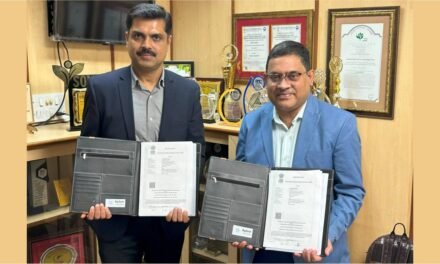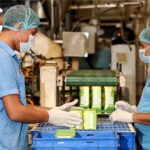The presence of pests in food production areas poses a serious threat to food safety. Ignoring pest issues can lead to contamination and damage to raw materials in various ways. Infestations can lead to revenue loss, customer distrust, fines, and legal action. In this second part, Anurag Mishra explores key components of an effective Pest Control Program.
The food industry is one of the most vulnerable segments which cannot do without pest control to maintain its high levels of food safety. The importance of pest control in the food industry and recommended prevention measures have already been described in the previous issue (March 2019). It was also discussed how to choose a commercial pest control agency.
Regarding Pest Control Agency’s responsibilities, the Agency must identify the types of possible pests in the facility and the surrounding area, select the Right Personnel for Treatment, determine the appropriate chemicals and methods, document the Process, and establish a review mechanism. Now, let us have a detailed look at various elements of the Pest Control process.
Organisations must have a formalised preventive pest control program, and it must be maintained in the facility by an appointed person. The pest control program must be undertaken by trained in-house personnel or be provided by an outside pest control contractor. A trained outside agency is highly recommended.
If done by an outside agency, then there must be a report from the agency, including the actions to be taken by the organisation (such as gap closure) and the possible types of pests. The treatment method must be designed based on the assessment done by an outside agency.
The facility should maintain written procedures outlining the program’s requirements to minimise the potential for product contamination from past activities or the use of materials and/or procedures designed to control pest activity and ensure effectiveness. In addition, specific programs and procedures will include, as a minimum:
Documentation of the Pest Control Activity including minimum
a) Type of Treatment
b) Frequency
c) Type of Pesticide used for treatment
Pesticides designated for use in Food Manufacturing Facilities must only be used by trained, licensed pest control technicians, where government codes require a license. Pesticide applications made within a facility or on the grounds of a facility will be undertaken by a licensed pest control applicator. This applicator can be an outside contractor or a properly licensed or trained employee. Methyl Bromide fumigant must never be used in a facility.
Facility personnel or outside pest control services must clearly explain how fogging pesticides are applied in accordance with the product label.
Accurate documentation of all pesticide applications, including rodenticides, used in or around the facility must be maintained. Documentation shall be maintained in accordance with government regulations and shall include, at a minimum:
a) Materials applied.
b) Target organism.
c) Amount applied.
d) Specific area where the pesticide was applied.
e) Method of application.
f) Rate of application or dosage.
g) Date and time treated and re-entry time after fogging.
h) Technician’s signature.
All pesticide containers and application equipment shall be appropriately labelled to identify the contents. Insecticides and herbicides each require separate equipment for application. All equipment used for pesticide application shall be adequately maintained in serviceable condition.
Pesticides stored in a facility shall be stored in a locked enclosure, preferably in an outside building away from production areas. Easily understandable labelling, warning of the contents, and limiting access shall be posted on the exterior entrances to this enclosure. The storage enclosure shall be adequately sized and constructed, and well-ventilated. Herbicides, residual and non-residual pesticide materials, and application equipment shall be separated by location in cabinets, lockers, or caged areas. The enclosure shall also contain the necessary materials to control spills or leaks and prevent injury to personnel.
Disposal of pesticides, pesticide containers, and pesticide residues shall be done in a manner that meets all regulatory guidelines and shall be consistent with the instructions included on the label for the material.
Outside bait stations for the control of rats and mice. These bait stations should meet tamper resistance standards and should be positioned appropriately, anchored in place, locked, and properly labelled. The bait stations shall be installed around the exterior perimeter of the facility at 50-100 feet (15-30 meters) intervals.
Lids to the bait stations shall be locked with devices supplied by or recommended by the manufacturer. The use of reusable plastic ties or other easily cut or tampered-with materials shall not be used.
Baits used shall be company-approved registered rodenticide or monitoring (non-toxic) feeding blocks. No bait shall be used in the facility.
Service conducted on the external monitoring devices shall be in line with the levels of rodent activity in the stations. However, all stations should be inspected and serviced at least once a month. Each service and its results will be documented for each station or device and maintained on file.

Internal devices used for routine monitoring purposes should be positioned at 20-35 feet (6.5-12 meters) intervals along the inside of exterior storage perimeter walls. Rodent control devices should be installed on each side of exterior overhead and pedestrian doors or where there is a potential for rodent entry into the facility. In any area where there is a potential for rodent activity, such as raw material storage areas within a facility, rodent control devices should be installed along interior walls. The contractor or facility personnel should inspect and clean the devices at least once a week.
Maps or schematics showing the locations of the rodent control devices should be maintained and kept up to date. A record of the service and cleaning of each rodent control device should be maintained in each device. The service documentation should include the findings from the device audits.
Rodent burrows, rodent runs, and any conditions attracting rodents or other pests both inside and outside the facility shall be eliminated.
If used, electric flying insect monitors should be numbered and used as needed to identify the entry of flying insects into the facility. Units should be so installed that insects are not attracted from outside the building. Units should not be placed within 10 -12 feet (3-4 meters) of an exposed product on a production or packaging line. All units should be listed on the cleaning schedule for cleanout on a weekly schedule during peak insect season. They can be cleaned monthly during the off-peak season. The shatterproof light tubes should be replaced annually, and records of this replacementshould be maintained.
Records shall be maintained to show the numbers of insects removed from the monitors.
Birds should be controlled by exclusion: netting, screening, mechanical traps etc.
Pest Control Management Review
Each organisation must review the pest control management to assess the effectiveness of the activity. A review will provide the organisation with a clear idea of the required changes to its established pest control system and processes. The recommended frequency is once every 6 months.
By following the above processes and methodology, we can reduce the pest infestation in our food products during manufacturing and storage and can eliminate the profit eaters like pets.
ALSO READ:
















